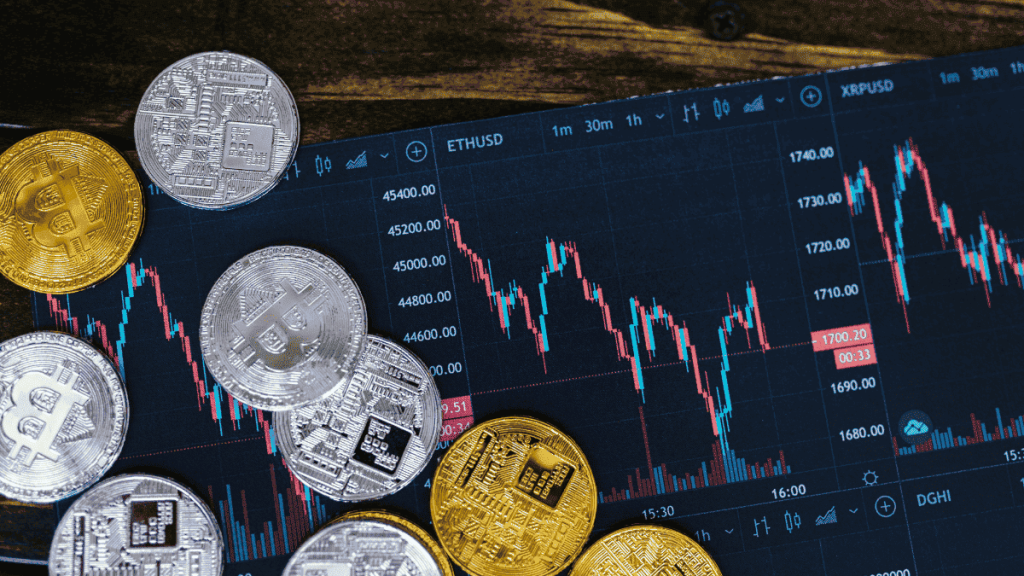Investing 101: A Beginner’s Guide to Smart Investments in 2025
Diving into the world of investing for the first time can feel overwhelming, as if you’re standing at the edge of a vast labyrinth. With so many markets to explore and strategies to consider, it’s perfectly natural to pause and wonder where you should take your first step. In this guide, we’ll break down five different investment types, comparing their learning curves, passive income potential, tax efficiency, risk levels, and actual returns. Let’s dive in!
Key Takeaways
- Individual Stocks: High learning curve, good passive income potential, high risk, and variable returns.
- REITs: Moderate learning curve, great passive income, medium risk, and stable returns.
- Cryptocurrency: Moderate learning curve, moderate passive income potential, very high risk, and volatile returns.
- Gold: Low learning curve, no passive income, medium risk, and steady returns.
- Index Funds: Low learning curve, moderate passive income, low risk, and solid long-term returns.
Understanding Individual Stocks

Investing in individual stocks means buying shares of companies you believe in. This can be exciting, but it comes with a high learning curve. Before you jump in, take the time to really get to know the company’s story—dig into its balance sheet to see how healthy it is financially, and look at where it stands in its industry to understand its strengths and challenges.
- Passive Income Potential: Good, as you can earn money through stock price appreciation and dividends.
- Tax Efficiency: Great if you use tax-advantaged accounts like ISAs or Roth IRAs.
- Risk Level: High, as individual stocks can be volatile.
For example, a $100 investment in Samsung turned into $676, but the overall return was negative due to poor stock selection. Picking the right stocks is crucial.
Exploring REITs (Real Estate Investment Trusts)
Real Estate Investment Trusts (REITs) let you tap into the property market—and share in rental income and potential appreciation—without ever having to buy or manage a building yourself. They collect money from investors to purchase properties and share rental income.
- Learning Curve: Moderate, as you need to understand how REITs operate.
- Passive Income Potential: Great, since they often pay high dividends.
- Tax Efficiency: Good, especially if held in tax-advantaged accounts.
- Risk Level: Medium, as they are less risky than individual properties but still subject to market fluctuations.
My $100 investment in a REIT is now worth $98.59, showing a small loss but earning $1.93 in dividends, resulting in a total return of 10.52%.
The World of Cryptocurrency
Think of cryptocurrency as a purely digital form of money that lives outside the traditional banking system. It’s an exciting space to explore, though you’ll need to invest a bit of time to get up to speed on how it works. You need to understand wallets, exchanges, and the concept of tokenomics.
- Passive Income Potential: Moderate, through staking and yield farming, but these methods carry higher risks.
- Tax Efficiency: Poor, as many transactions are taxable events.
- Risk Level: Very high, with extreme volatility.
For instance, a $100 investment in Bitcoin grew to $652,124, but such returns are rare and come with significant risk.
Investing in Gold
For centuries, people have turned to gold as a reliable way to protect and preserve their wealth. It’s simple to invest in, either through physical gold or gold ETFs.
- Learning Curve: Low, as it’s straightforward to understand.
- Passive Income Potential: Zero, as gold doesn’t generate income.
- Tax Efficiency: Good, especially for certain gold coins.
- Risk Level: Medium, as it holds value well but doesn’t grow like stocks or crypto.
My investment in gold is now worth $140.10, showing a solid return of 40.1% over four years.
The Benefits of Index Funds
Index funds allow you to invest in a collection of stocks, mirroring the performance of a specific index like the S&P 500.
- Learning Curve: Low, as they are passive investments.
- Passive Income Potential: Moderate, with dividends from the underlying stocks.
- Tax Efficiency: Great, especially in tax-advantaged accounts.
- Risk Level: Low, as they are diversified across many companies.
My $100 investment in an index fund is now worth $179.54, reflecting a 57% return, showcasing why they are a favorite for many investors.
Conclusion
Each investment type has its pros and cons. Some are better for quick growth, while others are safer and more stable. The key takeaway? Start early. Even small amounts can grow significantly over time due to compounding. Don’t wait to begin your investment journey!






